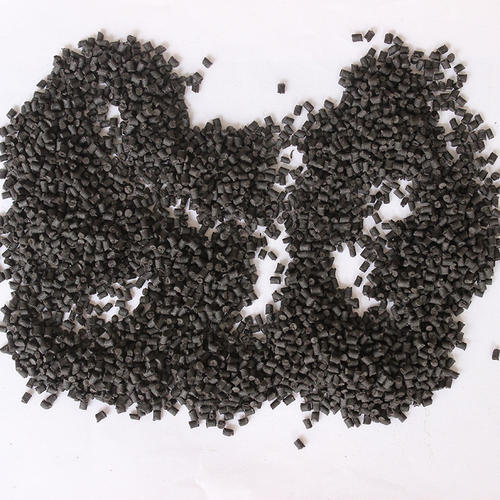What are the functions and process characteristics of common engineering plastics
PS (polystyrene)
Function
PS is an amorphous polymer with good mobility and low water absorption (less than 00.2 percent). It is a transparent plastic easy to form and process. The product has a light transmittance of 88-92%, strong coloring power and high hardness. However, PS products are brittle, prone to internal stress cracking, poor heat resistance (60-80 ℃), non-toxic, with a specific gravity of about 1.04gcm3 (slightly greater than water). Molding shortening rate (its value is generally 0.004-0.007in / in). Transparent PS - this name only indicates the transparency of the resin, not the crystallinity.
(chemical and physical properties: most PS used in trade are transparent and amorphous materials. PS has very good geometric stability, thermal stability, optical transmission, electrical insulation and very small moisture absorption tendency. It can resist water and diluted inorganic acids, but can be corroded by strong oxidizing acids such as concentrated sulfuric acid, and can swell and deform in some organic solvents.)
Process characteristics
The melting point of PS is 166 ℃, the processing temperature is generally 185-215 ℃, the melting temperature is 180~280 ℃, the upper limit of flame retardant materials is 250 ℃, and the decomposition temperature is about 290 ℃, so the processing temperature scale is wide. Mold temperature is 40~50 ℃, injection pressure is 200~600bar, fast injection speed is recommended for injection speed, and all conventional types of gates can be used for runner and gate.
PS materials generally do not need monotonic treatment before processing unless they are stored improperly. If monotony is required, it is recommended that the monotony condition be 80C and 2~3 hours. Because PS has low specific heat, it can condense and solidify quickly when making some molds. Its cooling speed is faster than that of ordinary materials, and the mold opening time can be earlier. The plasticizing time and cooling time are shorter, and the forming cycle time will be reduced; The gloss of PS products is better with the increase of mold temperature.
Typical scale use

Packaging products (containers, covers, bottles), disposable medical supplies, toys, cups, knives, tape reels, windproof windows and many foaming products - egg boxes. Meat and poultry packaging plates, bottle labels and foamed PS cushioning materials, product packaging, household products (tableware, trays, etc.), electrical (transparent containers, light source diffusers, insulating films, etc.).
Hips (modified polystyrene)
Function
Hips is a modified material of PS. its molecule contains 5-15% rubber. Its resistance is about four times higher than that of PS. its impact strength is greatly improved (high impact polystyrene). It has flame retardant grade, stress cracking grade, high gloss grade, extremely high impact strength grade, glass fiber reinforced grade and low residual volatile grade.
Regulate other important functions of hips: bending strength 13.8 ~ 55.1mpa; Tensile strength 13.8-41.4mpa; The cracking elongation is 15-75%; Density: 1.035-1.04 g / ml; It has the advantages of PS molding and strong coloring power. Hips products are opaque. Hips has low water absorption, so it is unnecessary to be monotonous in advance during processing.
Process characteristics
Hips contains 5-15% rubber, which affects its activity to a certain extent, so the injection pressure and forming temperature should be higher. The cooling speed is slower than that of PS, so the pressure holding pressure, pressure holding time and cooling inlet shall be met. The forming cycle will be slightly longer than that of PS, and its processing temperature is generally 190-240 ℃.
Hips resin absorbs water slowly, so it is generally unnecessary to be monotonous. Sometimes too much water on the surface of the material will be absorbed, and then affect the appearance quality of the final product. The remaining moisture can be removed after 2-3 hours of monotony at 160 ° F. There is a special problem of "white edge" in hips parts, which can be improved by gentle clamping force of the traveling die, reducing the pressure and time of holding pressure, and the water marks in the products will be more significant.
Source: Jiangmen engineering plastics http://www.wywantong.com/
-
04-13
PVC Engineering Plastics: how PVC plastic pipes are formed
The forming process of PVC plastic pipes should start from the raw materials of PVC plastic granules, which can be divided into soft PVC and hard PVC according to the added amount of stabilizer, plast
-
11-12
What is the filling property of Jiangmen engineering plastics
What is the filling property of Jiangmen engineering plasticsIn recent years, PC modified plastics have developed rapidly in China, and its industrial system is gradually established and improved. Th
-
10-08
Jiangmen Engineering Plastics: how to classify Jiangmen engineering plastics?
How to classify Jiangmen engineering plastics? 1. Classification by application characteristicsAccording to the different application characteristics of famous plastics, plastics are usually divided
-
08-30
Application scope of PBT engineering plastics
PBT engineering plastics are widely used in electronics, car industry, office machinery and other fields. In Japan and the developed countries in Europe, PBT engineering plastics are mainly used in t